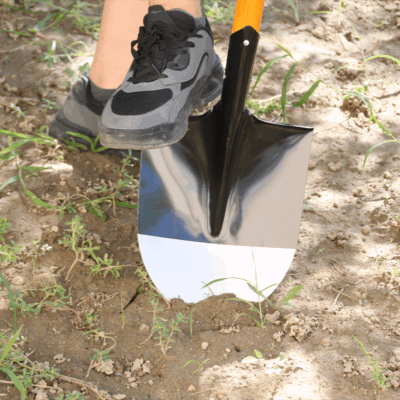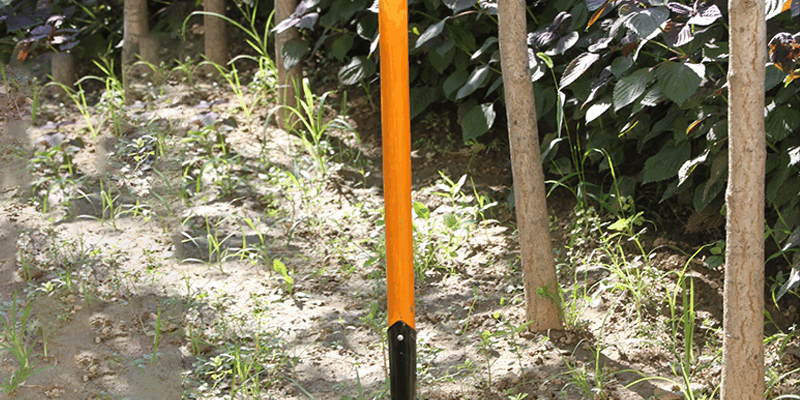The garden hoe is one of the most versatile tools in both commercial farming and landscaping. Its blade design determines how efficiently it cuts, loosens, and shapes soil. For OEM buyers and distributors, understanding hoe blade profiles is essential for sourcing the right products that meet specific field requirements.
1. Understanding the Role of Blade Geometry
The blade geometry defines how the hoe interacts with the soil. The angle between the blade and the handle affects penetration depth, while curvature determines how soil is lifted or turned. Even a 5° difference in blade tilt can alter productivity by up to 20% in repetitive weeding operations.
Professional Garden Hoe Manufacturers usually design multiple blade geometries to suit various agricultural and horticultural applications. Choosing the right one reduces operator fatigue and improves long-term tool durability.
2. The Three Main Blade Profiles
Flat or Draw Hoe:
This traditional rectangular design is ideal for soil shaping, trenching, and heavy weeding. The sharp, flat edge cuts deep roots efficiently. It’s often forged from medium-carbon steel (AISI 1045) and heat-treated to ensure both hardness and flexibility.
Heart-Shaped Hoe:
The pointed tip penetrates compact soil easily, making it excellent for furrowing and cultivating between rows. It concentrates force at a single point, reducing drag in clay soils. Farmers favor it for precision work and vegetable planting beds.
Loop or Stirrup Hoe:
Designed for surface-level weeding, this oscillating shape slices through roots just below the surface without disturbing the upper soil layer. Its open design minimizes clogging and is preferred for maintaining large gardens or urban green areas.
3. Material and Hardness Optimization
Choosing the right material is crucial. Boron steel provides excellent wear resistance, while spring steel improves flexibility. Optimal hardness for hoe blades is 45–50 HRC to maintain sharpness while preventing brittleness.
Buyers should request hardness and tensile test reports to confirm consistency. Reputable suppliers often include these reports with each shipment, ensuring repeatable performance for bulk OEM orders.
4. Blade Angle and Welding Technology
The angle between the blade and handle typically ranges from 30° to 40°. Lower angles provide more leverage but require greater user effort. Higher angles are better for light soil cultivation.
Advanced forging or MIG welding technologies improve bonding strength between blade and socket. Factories producing under the Garden Tool Manufacturers network often utilize robotic welding for precise joint control and uniform penetration.
5. Surface Coating and Corrosion Resistance
A hoe blade faces direct contact with moisture and fertilizers, leading to oxidation. Powder coating, electrophoresis (e-coating), and hot-dip galvanization are effective ways to extend product lifespan.
For markets in humid climates, double-layer coating (zinc primer + powder finish) is recommended. Some OEM clients also specify color-coded coatings to distinguish product lines—such as green for professional-grade, yellow for DIY.
6. Handle and Balance Considerations
While blades do the work, handle balance determines control. A properly balanced hoe minimizes wrist torque and ensures smooth soil cutting. Hardwood, fiberglass, and composite handles are common materials, each with its pros and cons:
Wood: natural feel and moderate vibration absorption.
Fiberglass: lightweight, waterproof, and durable.
Steel: strongest option but can transfer vibration if not insulated.
Handle length typically ranges from 120 to 150 cm for adult users.
7. Matching Blade Profiles to Soil Type
| Soil Type | Recommended Blade | Key Features |
|---|---|---|
| Clay or hard-packed soil | Heart-shaped | Penetrates dense soil efficiently |
| Sandy or loose soil | Flat blade | Controls depth and displacement |
| Loam or mixed soil | Loop hoe | Smooth gliding, minimal disturbance |
Custom-matching hoe type to regional soil texture ensures improved customer satisfaction and better end-user reviews.
8. OEM Customization Options
Manufacturers can tailor hoe designs through:
Blade shape, width, and curvature customization
Laser-engraved logos or embossed branding
Custom coatings and anti-slip handle grips
Balanced weight adjustment for ergonomic comfort
Advanced OEM partners also support CAD modeling and small-batch prototyping before mass production—ensuring the final model aligns perfectly with your target market.
9. Testing and Quality Verification
For B2B procurement, always request:
Drop tests: to verify weld integrity
Salt spray tests: to check corrosion resistance
Dimensional inspection reports: for blade uniformity
A reliable supplier will include full quality documentation and even support third-party audits upon request.
10. Final Thoughts
Selecting the right garden hoe blade is a balance between performance, ergonomics, and longevity. The ideal combination depends on soil type, climate, and application.
Working with established Garden Hoe Manufacturers ensures access to refined blade designs, stable metallurgy, and consistent mass-production quality — the foundation for scaling your landscaping or agricultural tool brand globally.

























